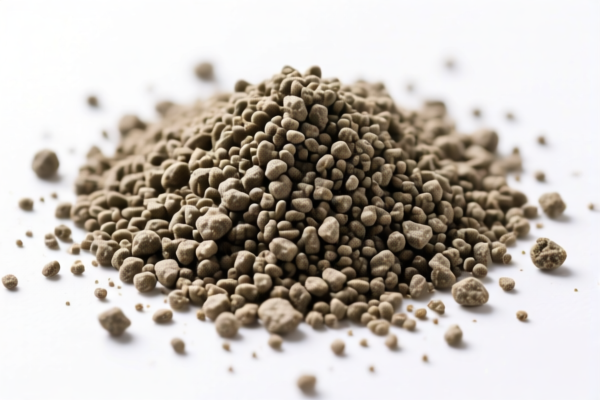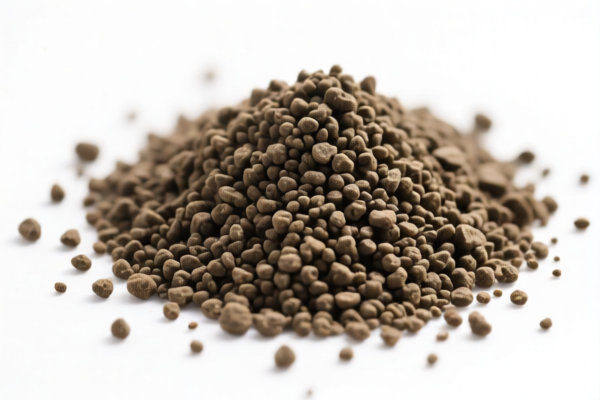| HS Code | Official Doc | Tariff Rate | Origin | Destination | Effective Date |
|---|---|---|---|---|---|
| 2517100055 | Doc | 55.0% | CN | US | 2025-05-12 |
| 3801900000 | Doc | 59.9% | CN | US | 2025-05-12 |
| 3825900100 | Doc | 55.0% | CN | US | 2025-05-12 |




Horticultural Grit
Horticultural grit is a manufactured, washed, and sieved sand used as a drainage material in plant pots, containers, and as a component in growing media. It differs from builders' sand and sharp sand in its consistent particle size, lack of contaminants, and mineral composition.
Material
Horticultural grit is typically produced from one of several sources:
- Silica Sand: The most common type, composed of quartz particles. Offers excellent drainage and stability.
- Granite Grit: Derived from crushed granite, providing good drainage and a slightly acidic pH.
- Other Minerals: Less common types may include basalt or other inert mineral compositions. Crucially, it should not contain limestone or chalk, as these raise pH levels.
Purpose
The primary purpose of horticultural grit is to improve drainage and aeration in growing media. It addresses issues arising from overly compacted soils which can lead to root rot, fungal diseases, and stunted growth.
Function
- Drainage: Creates spaces within the soil mix, allowing excess water to flow through freely.
- Aeration: Improves oxygen availability to roots, essential for healthy growth.
- Root Support: Provides physical support for roots, particularly in containers.
- Prevents Compaction: Maintains the porosity of the growing medium over time.
- Temperature Regulation: Can help moderate soil temperature fluctuations.
Usage Scenarios
- Potting Mixes: Added to compost-based mixes to improve drainage for plants susceptible to root rot.
- Orchid Growing: A key component in orchid bark mixes, providing essential aeration for epiphytic roots.
- Succulent and Cactus Growing: Used in well-draining mixes to prevent waterlogging.
- Drainage Layers: Placed at the bottom of pots to facilitate drainage (though this practice is increasingly debated, as it can create a perched water table).
- Top Dressing: Used as a surface layer to improve drainage around plant stems and reduce evaporation.
- Alpine and Rock Garden Plants: Essential for replicating the fast-draining conditions these plants require.
Common Types/Grades
Grit is typically categorized by particle size, often measured in millimeters:
- Coarse Grit (2-4mm): Provides the best drainage and aeration; ideal for orchids and cacti.
- Medium Grit (1-2mm): A versatile grade suitable for a wide range of plants.
- Fine Grit (0.5-1mm): Used for seed sowing or for plants requiring slightly better water retention.
- Very Fine Grit (0.25-0.5mm): Less common, used for specific applications like rooting cuttings.
It is important to choose the appropriate grit size based on the plant's specific needs and the other components of the growing medium.
Horticultural grit is not explicitly defined within the provided reference material. However, based on its common use as a concrete aggregate, for road metalling, or for railway ballast, it may fall under the classification of pebbles, gravel, or broken/crushed stone.
Here are the relevant HS codes found within the reference material:
- 2517100055: This HS code covers pebbles, gravel, broken or crushed stone, of a kind commonly used for concrete aggregates, for road metalling, or for railway or other ballast; shingle and flint, whether or not heat-treated. This includes materials commonly used in construction and landscaping.
- 25: Minerals, including ores, slags, ash.
- 17: Stone, sand, earths, fireclay; other mineral products.
- 100055: Specifically designates pebbles, gravel, broken or crushed stone for concrete, road, or railway use.
- Tax Details: A base tariff of 0.0% applies, with an additional surcharge of 25.0%. After April 2, 2025, the surcharge increases to 30.0%, resulting in a total tariff of 55.0%.
According to the provided reference material, the HS code options related to 'horticultural grit' are limited, with only the following 1 found.
Please note that regarding HS code 2517100055, the material should be verified as being commonly used for concrete aggregates, road metalling, or railway ballast to ensure correct classification.
Customer Reviews
This is the best guide I've seen on horticultural grit. The HS code details and tariff information are spot on for my business needs.
I found the section on the purpose of horticultural grit very useful. It helped me understand why it's essential for drainage and aeration.
The explanation of the 55% tariff and its breakdown was super clear. Made calculating export costs a breeze.
The HS code info was helpful, but I wish there were more examples of how to classify horticultural grit in different contexts.
Great resource for understanding the different grit sizes and their specific plant applications. Exactly what I needed for my garden project.